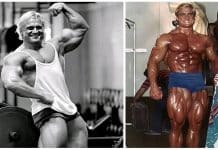Change up your diet plan.
Barbara Rolls, Ph.D, is a professor of nutritional sciences and obesity researcher at Penn State. She recently released her Volumetrics diet and it has been receiving high scores from nutritionists for being safe, effective, and sustainable. The Volumetrics diet is a weight loss diet, and it’s based off a simple directive- fill up more with less food.
As such, the diet prioritizes consumption of foods that are high in fiber and low in calories. It also prioritizes carbs and proteins, which have only 4 calories per gram to fats’s 9. Rolls categorized food according to its value in this system. There are four food groups, beginning at 1, with the highest valued foods, and ascending towards group four, the lowest value. WomensHealth reported:
“Group one: non-starchy fruits and vegetables, nonfat milk and broth-based soup
Group two: starchy fruits and veggies, grains, breakfast cereal, low-fat meat, legumes, low-fat mixed dishes like chili and spaghetti.
Group three: meat, cheese, pizza, french fries, salad dressing, bread, pretzels, ice cream and cake.
Group four: crackers, chips, chocolate candies, cookies, nuts, butter and oil.”
Like any diet, Volumetrics has its drawbacks. First of all, it is a quite “general’ diet. It does not offer the precision of something like IIFYM. Secondly, like most weight loss diets, it ignores most nutritional qualities like vitamins, minerals, antioxidants, anti-inflammatories, electrolytes, etc. There is much more to nutrition than calories and fullness – many high calorie foods are healthy and many low-calorie ones are not. Thirdly, many people who overeat do not overeat because they are constantly hungry, they overeat because they are bored or addicted to food. Comedian Louis CK put it best “I don’t stop eating when I’m full, I stop eating when I hate myself.” The idea that excess hunger is what’s causing millions of Americans to over-consume candy, soda, and pizza is a bit ridiculous.
But this way of looking at food can have some value. Many people don’t need a precise diet, and are simply looking to gain or lose weight. If that is the case, this classification can be an excellent general guideline. If reversed, it can help one gain weight. In short it is simply another dieting tool, and for bodybuilders looking for new methods to find out what works for them, it can be a valuable addition to their approach to food.
For more news and updates, follow Generation Iron on Facebook, Twitter, and Instagram.
















